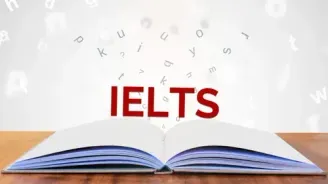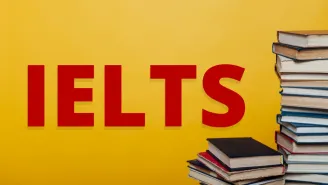The Return Of Huarango Reading Answer Passage
The Return Of Huarango Reading Answer Passage
The arid valleys of southern Peru are welcoming the return of a native plant.
Paragraph A. The Peruvian south coast is a 2,000-kilometer-long strip of desert trapped between the Andes and the Pacific Ocean. It is also one of the most endangered ecosystems on the planet. Because it seldom rains there, the only year-round water source is buried tens of metres under the surface. This is why the huarango tree is so well adapted to living there: it has the longest roots of any tree on the planet. By stretching down 50–80 metres, they suck up water for the tree while simultaneously bringing it up into the upper subsoil, providing a water supply for other plant life.
Paragraph B. Dr. David Beresford-Jones, an archaeobotanist at Cambridge University, investigated the role of the huarango tree in landscape change in southern Peru's Lower Ica Valley. He regarded the huarango as an important element of the ancient people's diet because it could reach underground water sources, enabling inhabitants to endure years of drought when their crops failed to thrive. Crops, on the other hand, gradually supplanted Huarango trees over time. When natural forest is chopped down, erosion occurs because there is nothing to hold the soil in place. As a consequence, when the huarangos go, the area becomes desolate. Nothing is growing in the Lower Ica Valley right now.
Paragraph C. For ages, the huarango tree has also been vital to the dwellers of the surrounding Middle Ica Valley. They ate items made from their seed pods and grew crops underneath them. Its branches were used to generate charcoal for cooking and heating, while its leaves and bark were utilised to manufacture herbal remedies, and its trunk was used to build houses. It is, however, rapidly declining. The great bulk of the valley's huarango woods have already been cleared for fuel and agriculture – first smallholdings, but now enormous farms producing foodstuffs for the worldwide market.
Paragraph D. "99 percent of the trees that were here 1,000 years ago have already perished," says botanist Oliver Whaley of London's Kew Gardens, who is conducting a pioneering initiative to protect and restore the fast-decreasing ecosystem alongside ethnobotanist Dr. William Milliken. To be successful, Whaley must win the favour of the villagers, which has forced him to overcome local preconceptions. "Increasingly ambitious communities feel that growing food trees in your yard or on your street implies that you are poor and must continue to cultivate your food," he adds. Whaley is encouraging locals to rekindle their love of harangues in order to avoid the Middle Ica Valley from following in the footsteps of the Lower Ica Valley. "It's a process of cultural resuscitation," he says. He has already organised a huapango festival to restore people's pride in their natural past, and he has assisted local schoolchildren in planting thousands of trees.
Paragraph E. "You should cultivate trees," Whaley continues, "which will assist them all in attempting to get consumers involved in reforestation activities." As a consequence, he has been engaging with people to attempt to transform huarango byproducts into food in order to offer a sustainable life. When you simmer the beans, you obtain a rich, dark sauce that tastes like molasses. It's also delicious in drinks, soups, and stews. ” The seeds and shells may be mixed to produce a rich, chocolaty "coffee," and the seeds can be crushed into flour for pastries. "It's rich with vitamins and minerals," is what Whaley has to say about it, and he's right.
Paragraph F. Some farmers are planting huarangos. Alberto Benevides, owner of Ica Valley's first organically cultivated ranch, which Whaley helped build, has been planting the evergreen for 13 years. He produces maple syrup and flour, which he sells at Lima's organic farmers' market. His acreage is modest and does not now provide him with enough revenue to live on, but he anticipates that it will improve in the future. "The fresh vegetable business in Peru is rapidly developing," says Benevides. I'm investing for the future.
Paragraph G. Although Whaley may convince the people to rekindle their bond with the huarango, the large farms are a significant danger. A couple of them slice through trees, breaking up the paths that allow animals, birds, and pollen to travel freely over the narrow wooded strip. He's persuading landowners to just allow him to construct forest zones on their property in the hopes of reversing this tendency. He believes that the additional forest will benefit agriculture by decreasing evaporation, providing a habitat for insects that manage pests, and reducing the demand for water.
Paragraph H . 'If we can record biodiversity and understand how everything works, we'll be ready to go ahead.' "Desert landscapes may be reduced to nearly nothing," adds Whaley. "It's not like a jungle, where a lot of space is required." Life has always been restricted to tunnels and islands in this location. If just a few trees remain, the colony may quickly develop since it is used to taking advantage of water when it comes. He believes that his method might be used as a model in other arid areas throughout the globe. If you can do it here, in the world's most unstable system, it's a true message of hope for other nations, particularly in Africa, where people are suffering from starvation and can't afford to leave for the rain.’
Let’s explore the questions and answers of The Return Of Huarango Reading passage.
The Return Of Huarango Reading Answers with Sample Questions
Have you read the passage? Now, take the test and find The Return Of Huarango Reading answers! Try to answer these questions by yourself before you sneak a peek at the answers given below.
Check Out Top 35 IELTS Reading Practice Test Questions with Answers
Below are some top 35 free IELTS Reading Practice test online questions with detailed answers to enhance your IELTS preparation online. We have provided sample passages for each test type for your reference.
- What Is Exploration Reading Answers
- Effects Of Noise Reading Answers
- The Discovery Of Baby Mammoth Reading Answers
- The Dead Sea Scrolls Reading Answers
- The Ring-Tailed Lemur Reading Answers
- Why We Need To Protect Polar Bears Reading Answers
- Nutmeg A Valuable Spice Reading Answers
- What Is Meaning Reading Answers
- Cutty Sark Reading Answers
- The Step Pyramid Of Djoser Reading Answers
- South Pole Adventurer Reading Answers
- The Future Of Work Reading Answers
- Ambergris Reading Answers
- Trees In Trouble Reading Answers
- Could Urban Engineers Learn From Dance Reading Answers
- The Flavour Of Pleasure Reading Answers
- The Value Of A College Degree Reading Answers
- Why You Should Delegate Tasks To Team Members Reading Answers
- Corporate Social Responsibility Reading Answers
- Forest Management In Pennsylvania USA Reading Answers
- Making Time For Science Reading Answers
- The Power Of Play Reading Answers
- Coastal Archaeology Of Britain Reading Answers
- How The Other Half Thinks Reading Answers
- Changes In Reading Habits Reading Answers
- The Forgotten Forest Reading Answers
- When Conversations Flow Reading Answers
- Attitudes Towards Artificial Intelligence Reading Answers
- The Ingenuity Gap Reading Answers
- A Bar At The Folies Reading Answers
- Booking A Wessex Cottages Holiday Reading Answers
- Sunset Tours Reading Answers
- Bird Migration Reading Answers
- Clutter Bugs Beware Reading Answers
- The Hidden Histories Of Exploration Exhibition Reading Answers
- Calisthenics Reading Answers
- Having A Lovely Time Reading Answers







